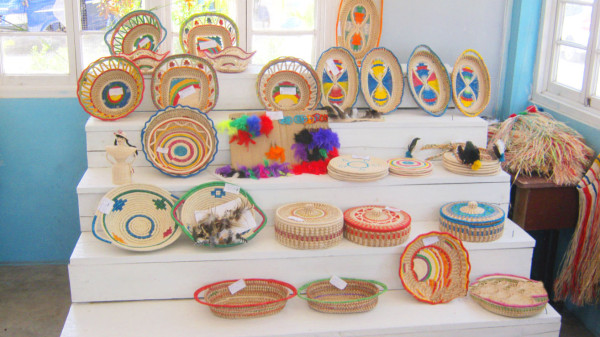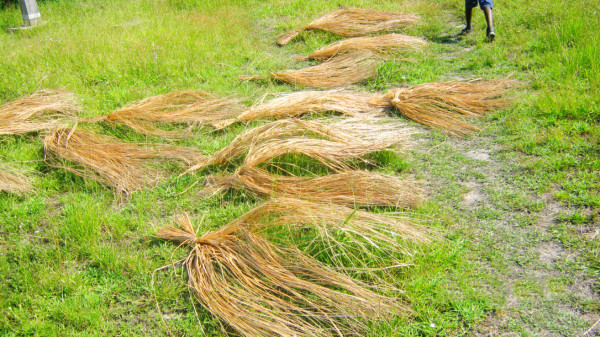Endowed with creativity, Ruth Shuman, an Arawak woman of St Cuthbert’s Mission can skillfully design and create a glamorous Indigenous outfit with matching footwear, shoulder bags, along with other accessories, while her gifted hands could also skillfully craft unique ornaments, all from palm branches.
Like Shuman, many of the Indigenous women from St Cuthbert’s Mission share the skill of creativity in craft, some of which are showcased in a craft shop established in the village.
But the women in the community remain hungry for work as most of their handiwork remains stocked on the shelves in the shop like ornaments, owing to the lack of customers.
Minister within the Ministry of Indigenous People’s Affairs Valerie Garrido-Lowe, told Stabroek News that she has always been calling for the art and craft industry to be boosted.
Besides the diversity in their craft, the minister noted that products like cassareep and crab oil amongst others being produced by the Indigenous people also do not gain much sales.
She said she will continue to raise the issue until markets are opened for the products. She believes that if the local products are marketed it will contribute significantly in building the economy of many of the Indigenous communities.
Some of the craft made by women from St Cuthbert’s Mission includes skirts, brassieres, slippers, shoulder-bags, jewel boxes, ornaments and bowls amongst other household items.
Shuman has been a resident of St Cuthbert’s for over 50 years and she was active in the craft industry since the 1980s.
She recalled that when she was first introduced to craft, she started creating carpets made of straws which were stripped from young Ite palm branches.
Shuman said that before the shoot which sprouts from the middle of the Ite tree is matured and opened, it would be cut off and processed. This includes stripping, boiling, washing and drying before it is ready to be used.
The finished material (straw) can be plaited or stitched into different designs, Shuman explained.
And although her work was exposed to several local and international markets, the craft industry in the community continues to struggle as there is no consistent demand for craft. Some of the expertise of the community would also be showcased annually at the heritage celebrations in the community and at the Sophia Exhibition Centre.
Shuman said that it requires skill and patience to produce quality items. Since value is foremost to her, she takes pride in her creation and she would often encourage and challenge the other women in the village to always maintain high quality in their work, as it sets them apart from the other inferior products being sold in the markets.
Shuman lamented that even during the heritage celebrations at the Sophia Exhibition Centre in September, many other locals who are not Amerindians were allowed to showcase and sell inferior products cheaper.
She said she was not certain where some of the other persons obtained their products from but she believes that the decision to allow them to sell and exhibit their products was a grave injustice to the Indigenous people.
In 2008, some of Shuman’s craft items were displayed at an exhibition in Barbados but she said that the result was poor as the revenue garnered could have only compensated for their stay in the country and to buy snacks there.
One of the best markets which she has had thus far was last year, when she exported some of her craft to St Kitts.
Seventy-five baskets, along with 500 pairs of slippers and 130 floor mats were exported. She has not yet received another order.
Some of the fruits of the hands of St Cuthbert’s women are being sold next to the craft mart near the Guyana Post Office Corporation building by vendors who would have purchased the items to resell.
This raises another issue which Shuman believes is unfair to the Indigenous women – the low prices they are being paid for their products wholesale, which are then retailed at double the price.
“At the moment the women are willing to work, but we need market for the products… I wish if the authorities can help to create markets for us… That will be a great help to the community,” Shuman said.










